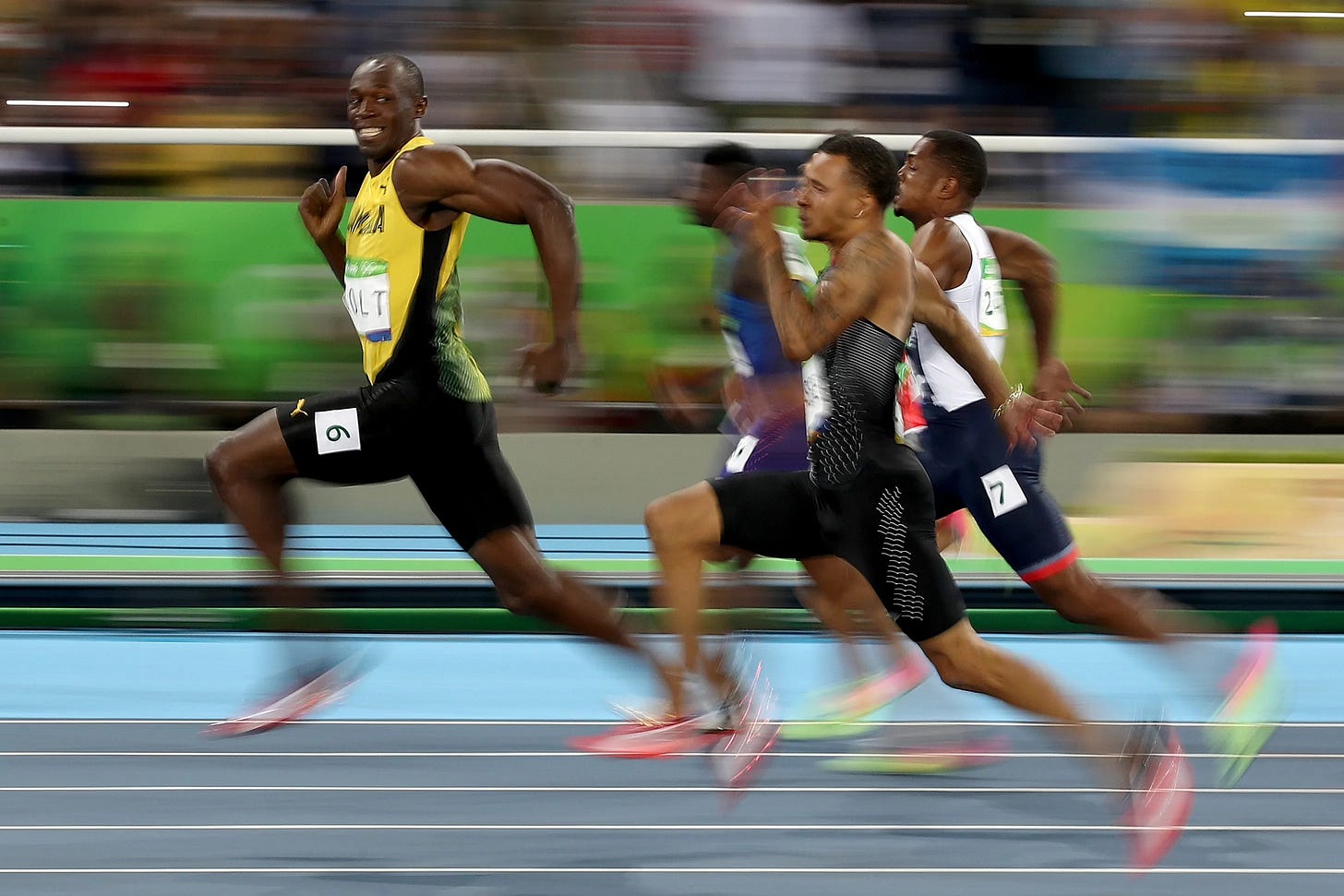The Usain Bolt Effect: winning without going all-in
Or how the ad industry got stuck in the middle
We all like to believe that we strive to achieve the best we possibly can, but the truth is that we only need to be a little bit better than our competition. Like Usain Bolt, looking back as he won the 100m in the 2016 Olympics, most businesses don’t need to do their best to win. They need to stay ahead of the pack.
The downside of this is that it embeds inefficiencies into the entire industry. Once you reach sufficient scale, you only need to optimize your business to keep it ahead of your competition.
That’s why most ad-tech businesses compete for inventory but don’t have to be wholly efficient in selling and optimizing that inventory. It’s why Facebook and Google can grade their homework as long as they have eyeballs that only they can sell. And it’s why most consumer insights businesses are highly manually intensive and produce datasets frequently riddled with errors.
If no one else is doing any better, what’s the economic driver for improvement? Like Usain Bolt, you can dominate the race, but how long will your records last? Not as long as if you’d focused on those last ten yards.
As an industry, I’d like us to look past the Usain Bolt effect and focus on building the best platforms possible. I’m not talking about gold-plating; I’m talking about examining the little things that go wrong and improving them.
In CTV, everyone focuses on their inventory, content, and customers. However, we also need to focus on the efficiency of the service. Every Brand Lift report I’ve seen from a CTV vendor shows a positive lift, but everyone keeps paying for them. The targeting segments we buy don’t have any thorough quality control applied. I’ve seen Hispanic viewing segments that never watch Spanish-language TV. It doesn’t make, but no one’s questioning it because it’s still working.
Zeev Neumeier from Gray Swan inspired this post, telling me how way too many of the campaigns he’s seen have a problem with impressions spiking at the beginning and the end. Operationally, I countered that the spike, in the beginning, is for the machine learning algorithms to learn what’s working, and the spike at the end is to finish spending the budget.
But, Zeev said, the eyeballs seeing those impressions in the spikes aren’t the right ones. And I get that. I bet the people paying for those impressions get it. But if everyone else is doing it, what need is there for the industry to change?
The answer is that all great leaders are kept awake by the desire to do better, and the greatest can inspire others with the same spirit. Love him or hate him, Elon Musk has driven through remarkable cost reductions in the Space Industry that have enabled a whole new generation of exploration. Christopher Nolan’s film-making doesn’t follow the franchise-driven playbook of most recent Hollywood releases but has made billions at the box office and inspired a whole new generation of filmmakers.
We must think like them and build better tech: find ways to improve things and stop at no compromise.
Please, do better.
You have it in you.



